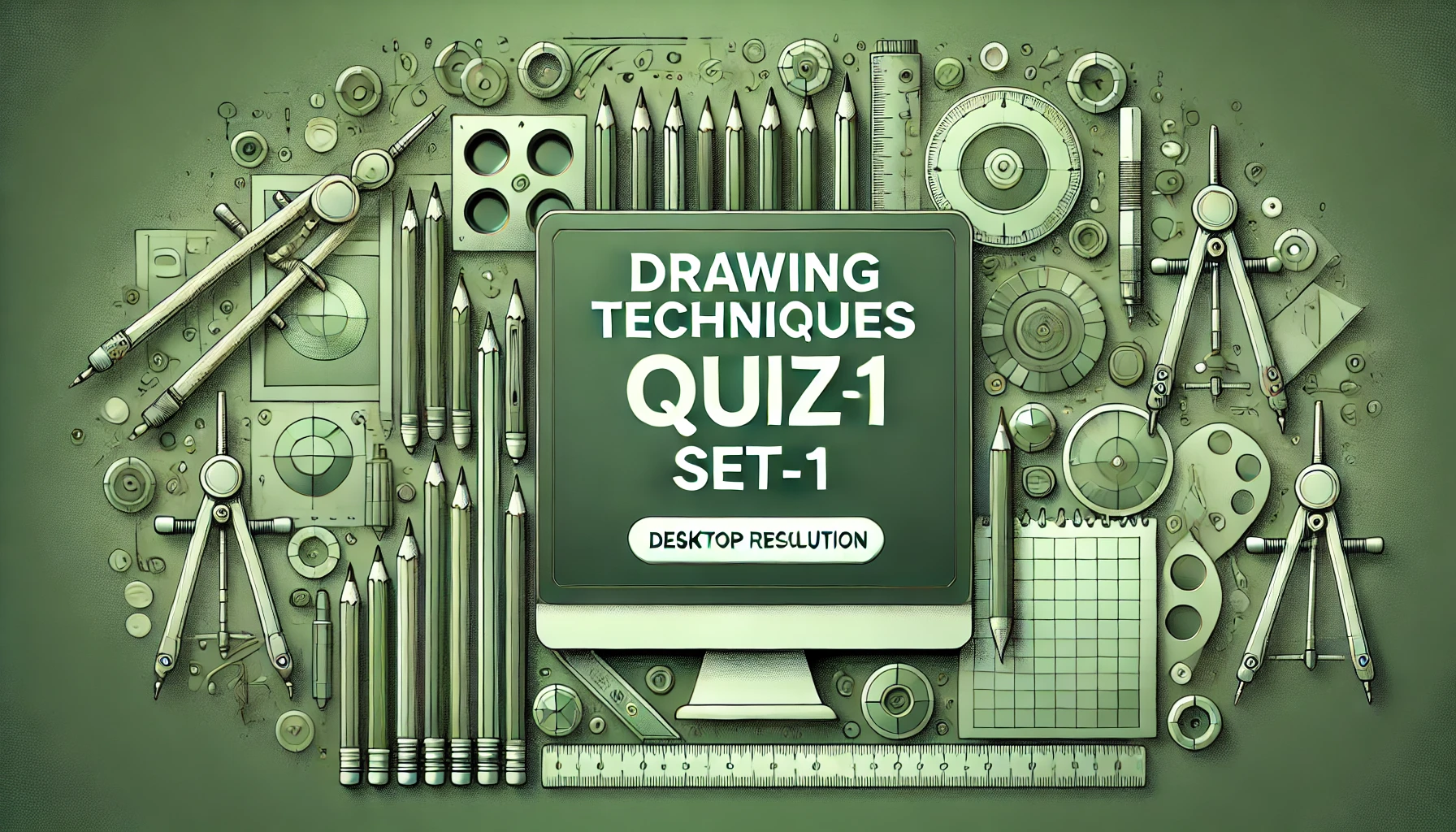Drawing Techniques Quiz Set-1 [2025]
Welcome to “Drawing Techniques Quiz Set-1 [2025]”! In this blog, we’ve curated 50+ engaging multiple-choice questions covering the fundamental and advanced concepts of drawing techniques. “Drawing Techniques Quiz Set-1 [2025]” is designed to help you refresh your basics, challenge your knowledge, and gain practical insights into the art and principles of technical and artistic drawing. Whether you’re a design student, an aspiring artist, or preparing for technical exams, this quiz is the perfect way to enhance your expertise in drawing techniques. Let’s dive into the “Drawing Techniques Quiz Set-1 [2025]” and start exploring! Drawing Techniques: Mastering the Basics and Beyond Drawing is a timeless art form that allows us to express our thoughts, emotions, and creativity on paper. Whether you’re a beginner exploring the world of art or an experienced artist aiming to refine your skills, understanding essential drawing techniques can significantly enhance your artistic journey. In this blog post, we delve into fundamental and advanced drawing techniques to inspire and guide you. The Basics of Drawing Techniques 1. Sketching Sketching is the foundation of all drawings. It involves creating rough outlines or preliminary drafts to map out the composition. Key tips for effective sketching: Use light strokes to ensure easy erasing and adjustments. Focus on capturing the proportions and overall structure. Practice gesture drawing to capture the essence of movement and pose. 2. Shading Shading adds depth and dimension to your drawings. Popular shading techniques include: Hatching: Drawing closely spaced parallel lines. Cross-hatching: Layering intersecting lines for darker areas. Blending: Using tools like blending stumps or your fingers to smooth gradients. Stippling: Creating texture and shadows using small dots. 3. Line Work Lines are the building blocks of art. Mastering line variation—thick, thin, and textured lines—can bring dynamism to your drawings. 4. Perspective Drawing Perspective gives your artwork a sense of depth and realism. There are three main types: One-point perspective: Best for simple scenes with a single vanishing point. Two-point perspective: Ideal for objects or scenes viewed at an angle. Three-point perspective: Used for dramatic viewpoints, like looking up or down at an object. See Also: Airport Engineering Quiz Set-1 Advanced Drawing Techniques 1. Dynamic Composition A well-planned composition can make your artwork stand out. Use principles such as the Rule of Thirds, leading lines, and focal points to guide the viewer’s eye through your drawing. 2. Negative Space Drawing This technique focuses on the space around and between the subject. By practicing negative space drawing, you can improve your understanding of proportions and spatial relationships. 3. Texture Rendering Textures bring life to your drawings. Whether it’s the smoothness of glass, the roughness of tree bark, or the fluffiness of fur, mastering texture rendering can make your artwork more realistic. 4. Chiaroscuro This is the dramatic use of light and shadow to create contrast and volume. Popularized by Renaissance artists like Caravaggio, chiaroscuro is an excellent way to add drama and focus to your work. Essential Tools for Drawing To get started, you’ll need a few basic tools: Pencils: Graphite pencils in various grades (e.g., HB, 2B, 6B) for sketching and shading. Paper: Use quality sketchpads or specialized drawing paper for better results. Erasers: Both standard and kneaded erasers for correcting and highlighting. Blending Tools: Such as blending stumps or tortillons. Markers and Pens: For line work and detailing. Tips to Improve Your Drawing Skills Practice Daily: Even 10 minutes of daily sketching can improve your skills over time. Study References: Observe real-life objects, photos, or other artists’ works to understand shapes, proportions, and lighting. Experiment: Try different styles and mediums to discover what suits you best. Seek Feedback: Share your work with peers or mentors to gain constructive criticism. Take Breaks: Resting your eyes and hands can help you notice details you might have missed. See Also: Tunnel Engineering Quiz Set-1 Frequently Asked Questions (FAQ) 1. How can I improve my drawing accuracy? To improve accuracy, start with basic shapes and use guidelines to map out proportions. Regularly practice observational drawing by sketching real-life objects. 2. What is the best way to learn shading? Begin by understanding light sources and how they create shadows. Practice with simple objects like spheres or cubes and use different shading techniques like hatching and blending. 3. Which pencil grade should I use for detailed drawings? For detailed drawings, use harder pencils like H or HB for fine lines and softer pencils like 2B or 4B for shading and dark areas. 4. Can I use digital tools for drawing? Absolutely! Digital drawing apps like Procreate, Adobe Photoshop, and Krita provide versatile tools and features for both beginners and professionals. 5. How long does it take to become good at drawing? There’s no fixed timeline. Progress depends on consistent practice, dedication, and learning. Regular practice can show noticeable improvement within a few months.
